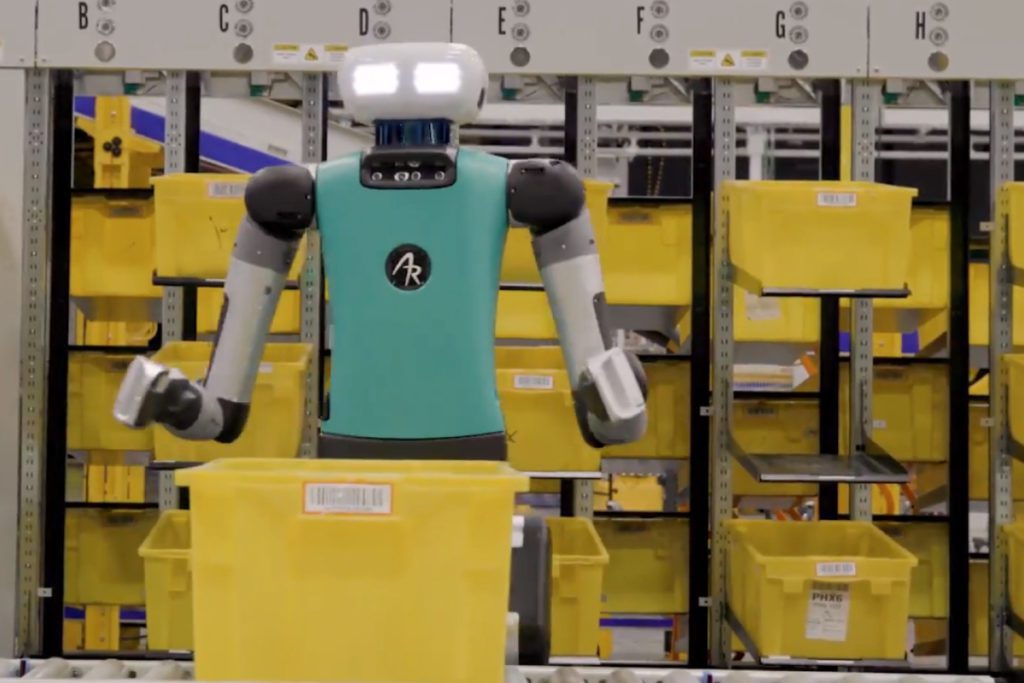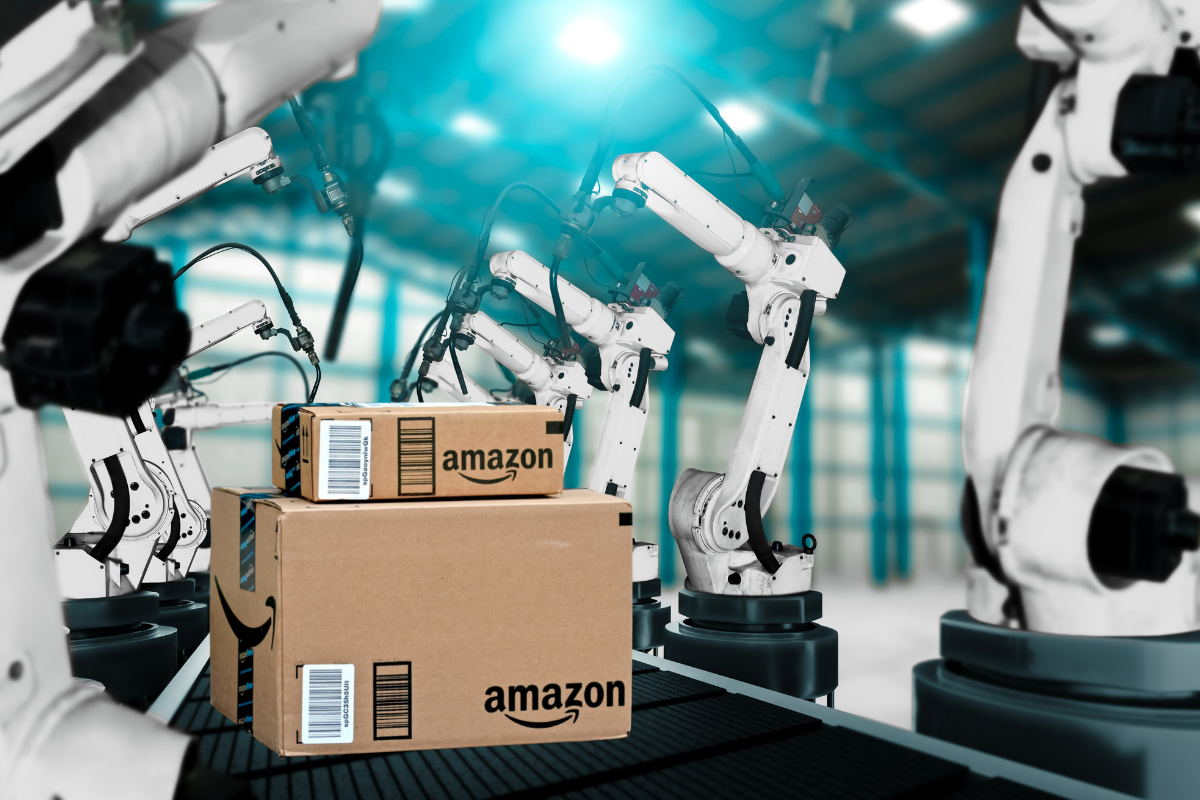Amazon has taken a significant leap in warehouse automation by introducing Digit, a humanoid bipedal robot, sparking concerns among its workforce about potential job displacement. Digit, characterised by a turquoise torso and smiley eyes, stands out from Amazon’s previous array of warehouse robots, which primarily consisted of cart-shaped or robotic arms.
Developed by Agility Robotics, in which Amazon has invested through its Industrial Innovation Fund, Digit represents the latest in a series of technological advancements within Amazon’s warehouses. Unlike the company’s earlier robots, Digit boasts a human-like form designed to operate seamlessly alongside human employees.
Currently, the operational cost of Digit is estimated at $10 to $12 per hour, but Agility Robotics’ CEO Damion Shelton anticipates this cost could drop to as low as $2 to $3 per hour, plus software overheads as production scales up. Despite Amazon’s assurance that Digit aims to work “collaboratively” with employees rather than replace them, the introduction of such advanced technology has understandably heightened workers’ anxieties about their job security.
Amazon’s journey towards automation began years ago. In 2017, the company had 45,000 robots across 20 fulfilment centres, a number that has since swelled to 750,000, all purportedly working in tandem with human staff. The company’s robot lineup has been diverse, featuring characters inspired by “Sesame Street” and “The Muppets” and including autonomous robots like Proteus and the Sparrow picking robot arm, each designed for specific tasks within the warehouse ecosystem.
Digit, however, is distinct in its ability to navigate and operate in human-oriented spaces within Amazon’s warehouses. Initially, Digit will assist in tote recycling, a repetitive task involving the handling of empty containers once inventory is exhausted.
Amazon champions these robotic innovations as tools to enhance worker safety and efficiency. The company asserts that such technology not only reduces the monotony of certain tasks but also provides employees with opportunities to focus on more complex and fulfilling aspects of their roles, ultimately aiming to enhance customer satisfaction.
Yet, as Amazon’s robotic fleet expands, the underlying question remains: Is the company steering towards a future with reduced human labour? The introduction of the Sparrow Arm last year already stirred apprehensions among workers, with some fearing direct job replacement. Such concerns are not unfounded, as community forums among warehouse workers have speculated about the long-term implications of robotic integration on human employment within Amazon.
Furthermore, the impact of robotics on worker safety is still a matter of debate. A 2020 whistleblower report from Reveal suggested higher injury rates in Amazon’s robotic warehouses compared to non-robotic ones, a claim Amazon disputed, citing data indicating lower incident rates at its robotic sites in 2022.
As Amazon continues to navigate the balance between technological advancement and human labour, the evolving landscape of warehouse automation remains a topic of keen interest and concern.

Opinion
Amazon’s foray into humanoid robotics with Digit is a testament to the company’s commitment to innovation and efficiency in its operations. However, this technological leap brings to the forefront critical concerns about the future of human labour. While Amazon’s intention to augment rather than replace human workers is clear, the apprehension among employees is understandable.
The transition to a more automated workforce poses significant challenges, not only in terms of job security but also in ensuring the safety and well-being of human employees who work alongside these advanced machines. It’s imperative that Amazon and companies alike strike a delicate balance between harnessing the benefits of robotic technology and valuing their human workforce, which remains integral to their operations.
In light of this technological evolution, one must ponder: Can the advancement of robotics in workplaces be harmoniously integrated with the human workforce, or are we witnessing the beginning of a fundamental shift in the nature of employment?
In all honesty, we are. Let’s not kid ourselves; Amazon is in no way, shape, or form investing millions of dollars into a project that could significantly reduce its operations costs because it values people and is trying to create a safer and more efficient work environment for its employees.
No! Amazon values its bottom line more than it would ever value a customer. We have all heard or know someone who has experienced the horrors of working in an Amazon warehouse. We have all heard the stories of Amazon trying their very best to stop their warehouse staff from unionising, so why should we be surprised that they have ramped up the production of robots to take over staff duties?
This isn’t the 1950s, and people are more informed than ever. If anyone can’t see that, a robot that doesn’t need to sleep, eat, take a break, and, most importantly of all “get paid for its work” is severely delusional. This is just the start, and as we can see, new developments in AI technology are slowly making strides into the human experience of labour.
Big corporations are beginning to see the value in limited staff and highly automated processes, which are far more cost-efficient. Now, while I don’t want to sound like a prophet of doom, I just think it’s important that we see what these already massively successful and profitable companies view their human employees as because it is becoming very apparent that we are nothing more than slow, expensive, and inefficient.
News Source: Business Insider



